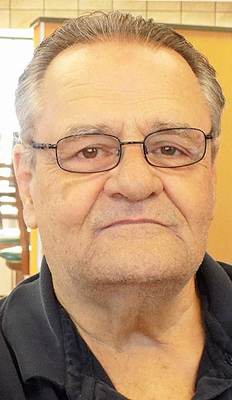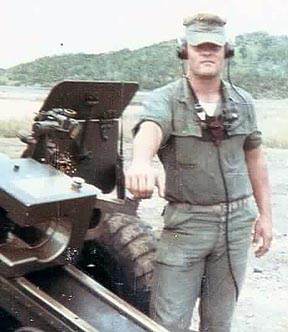50 years later: A Marine remembers Khe Sahn
It has been 50 years since the Vietnam War battle of Khe Sahn has been fought, but Medford resident and U.S. Marines veteran Gene Carnes still recalls the details vividly half a century later.
Serving in a Marines’ artillery unit on the Khe Sahn Marine Base located half a mile from the DMZ – the dividing line separating North and South Vietnam and near the border with Cambodia – the base’s mission was to try and halt Communist North Vietnamese troops moving into the south along what was referred to as Route 1.
The base, about twice the size of the Anderson County High School campus, was under almost constant attack by the North Vietnamese from Jan. 21 through May of 1968, during the Tet offensive. Tet is the Chinese New Year. There were more than 5,000 U.S. troops stationed at Khe Sahn.
“The North Vietnamese wanted to do to Khe Sahn what they did to the French base at Dien Bien Phu in 1954,” Carnes said, noting the North’s victory then convinced France to withdraw from Vietnam, which at that time was a French colony. “The North Vietnamese were trying to set an example by forcing us out.”
U.S. military estimates indicated as many as 45,000 North Vietnamese were involved in the battle. Soviet and Chinese-made rockets were continuously shelling the base. U.S. Air Force B-52 bombers were called in to hit enemy fortifications just outside the base over a three-week period.
“It was one of the scariest scenes I’ve ever experienced as these big B-52s would come in to bomb so close to the base,” Carnes said.
Carnes recalled the North Vietnamese hit an ammunition dump with rockets setting off explosions continuing over three days.
“The ammo didn’t all go up right away, but areas would eventually get hot and would set off the explosions,” Carnes said. “I had to stay in a bunker for several days.”
When the Carnes’ group in the bunker finally decided to go outside, matters weren’t any easier.
“We had to deal with snipers,” Carnes said. “They started firing at us and we fired back. The fight went on about 30 minutes. In spite of everything going on, the enemy never did make it onto the base.”
Five-hundred Marines were killed during the Khe Sahn siege. Of the 18 Marines in Carnes’ unit, nine died.
“I had some good friends who were killed and it was tough to go through that,” Carnes said. “I was not much for prayer then (he was 21), but I started praying that day and have continued doing so ever since at least once a day.”
Carnes’ unit arrived at Khe Sahn Aug. 15, 1967. U.S. troops arriving then were told to expect becoming involved in military action soon.
“Rumors and intelligence reports for months indicated the North Vietnamese were building up forces north of the DMZ to mount a mass invasion,” Carnes said. “Nobody was surprised when it started.”
Carnes said once the enemy troops invaded, they dug trenches around the base, which is why the B-52s were brought in.
“The B-52s were also bombing the enemy’s supply lines above the DMZ, but the North would always stage a comeback with more supplies and more troops,” Carnes said. “It is estimated 20,000 North Vietnamese were killed, but they were all quickly replaced.”
Carnes noted there were four other U.S. bases in the region under attack, but not under the same intensity occurring at Khe Sahn. When the siege finally ended, Carnes was transferred to one of those bases.
The battle of Khe Sahn received wide media attention with network TV reporters covering the battles and airing reports to the United States, including CBS anchor Walter Cronkite. Cronkite eventually gave the opinion on the air the U.S. could not win the war. President Lyndon Johnson — who withdrew from his bid for re-election on March 31, 1968 to devote full-time to work toward developing a peaceful solution — later said Cronkite’s comment was decisive in turning U.S. public opinion against the war.
Carnes returned home to the United States in 1970 and eventually settled in East Tennessee, working many years in transportation related to DOE operations in Oak Ridge. He still works in transportation.
Over the years, Carnes has kept in touch with some of his comrades from the Khe Sahn battles and there have been several reunions. He noted that as time goes by, the number of those comrades is dwindling.
Carnes said the Khe Sahn experience from half a century ago made him more spiritual.
“I pray every day and am grateful that my heavenly father guided me through that time,” said Carnes, who is a member of the Church of Jesus Christ of Latter-Day Saints, where he has served in a number of leadership capacities.



